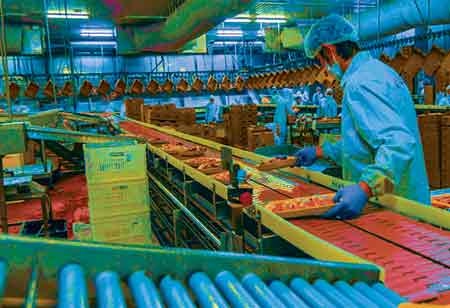THANK YOU FOR SUBSCRIBING
Be first to read the latest tech news, Industry Leader's Insights, and CIO interviews of medium and large enterprises exclusively from Food and Beverage Tech Review
A Look at 2022's Food Technology and Sustainability Predictions
The food system is in crisis due to rising food prices, ongoing supply chain issues, decade-high inflation,

By
Food and Beverages Tech Review | Tuesday, December 20, 2022
Stay ahead of the industry with exclusive feature stories on the top companies, expert insights and the latest news delivered straight to your inbox. Subscribe today.
The year 2022 promises to be a turning point for food innovation, with technologies such as cultured meat and other low-footprint products hitting shelves in massive numbers.
FREMONT, CA: The food system is in crisis due to rising food prices, ongoing supply chain issues, decade-high inflation, worker shortages due to Covid and working conditions, and climate. McKinsey estimates that 73 million jobs, including those in the food production and manufacturing industries, will be lost to automation by 2030.
The converging crises place human rights and global health at the center of the plate. Various factors influenced the top forecasts for 2022, such as food policy and innovations.
Latin America Becomes the Leading Region for Food Technology Innovation
In 2021, venture capital investments in Latin America set records. According to Crunchbase, the region experienced a 300 percent year-over-year increase in funding, reaching nearly $19.6 billion. Firms are expanding their presence; Softbank has committed $8 billion to the region since 2019 after announcing an additional $3 billion investment. NotCo and Daki were also among the 18 Latin American unicorns in 2021.
Profitability is the pursuit of zero food waste.
Creative solutions have existed for years, but it has been challenging to scale zero-waste solutions. Frequently, the economics did not work out. California's new legislation, which states that composting is the next climate crusade, may change that. Landfill methane emissions are a significant contributor to climate change. California Senate Bill 1383 requires businesses and individuals to separate organic material, and those who do not comply face fines.
The potential for progress is unlocked if this is the proverbial canary in the coal mine. Food rescue company Goodr, for example, uses proprietary technology and data to match surplus food with those in need. Also, for instance, Hartsfield-Jackson Atlanta International Airport is the company's client that manages the supply chain for excess food.
Food system "Re-Regionalization"
More and more consumers want to know where their food comes from and verify its origin. With rising food and freight costs and food shortages, purchasing has become more economical and appealing. Farm subscription programs or "CSAs" for produce and meat saw unprecedented growth in 2020 and 2021.
It benefits farmers as well. Despite a 20 percent increase in meat prices, ranchers are earning less than ever. To name a few, Tyson, Cargill, JBS, and National Meatpacking, the four largest meat packers, control 85 percent of the industry. To re-regionalize the food system, however, infrastructure is imperative. It is notoriously difficult for small-scale farmers to access processing capacity and retain more of their supply chain. President Biden recently announced a $1 billion investment in regional meat processors; this infrastructure bill could help startups like Southwest Black Ranchers and 99 Counties address the market opportunity.
I agree We use cookies on this website to enhance your user experience. By clicking any link on this page you are giving your consent for us to set cookies. More info







